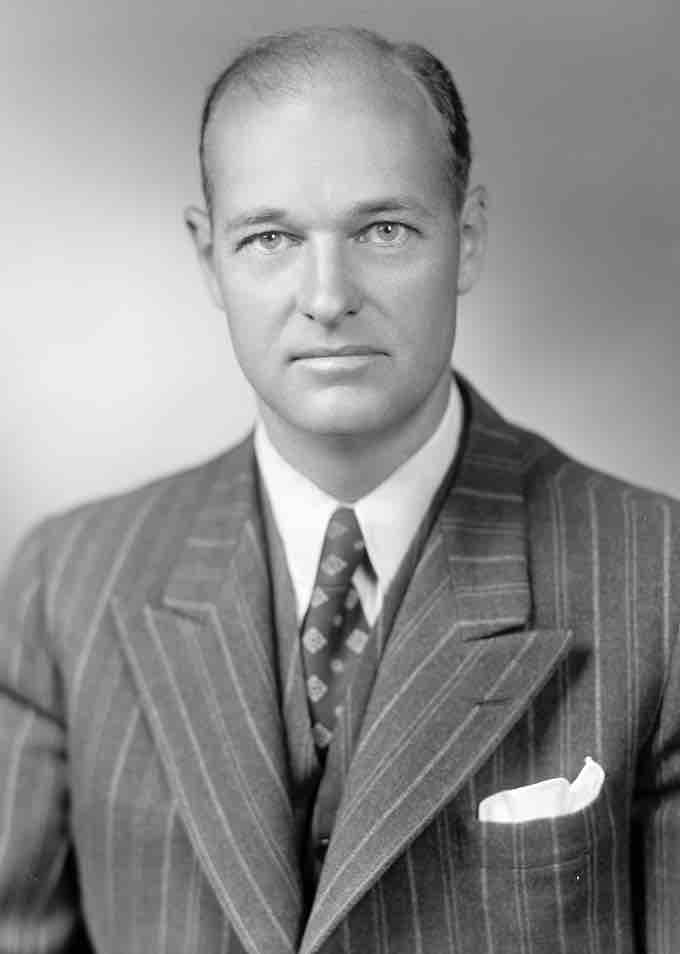Policies of Containment
Containment was a U.S. policy that used numerous strategies to prevent the spread of communism abroad. A component of the Cold War, this policy was a response to a series of moves by the Soviet Union to enlarge communist influence in Eastern Europe, China, Korea, and Vietnam. It represented a middle-ground position between détente and rollback.
The basis of the doctrine was articulated in a 1946 cable by U.S. diplomat George F. Kennan known as the "Long Telegram." As a description of U.S. foreign policy, the word originated in a report Kennan submitted to U.S. Defense Secretary James Forrestal in 1947, a report that was later used in a magazine article. According to Kennan, the Soviet Union did not see the possibility for long-term peaceful coexistence with the capitalist world. It was its ever-present aim to advance the socialist cause. Capitalism was a menace to the ideals of socialism, and capitalists could not be trusted or allowed to influence the Soviet people. Outright conflict was never considered a desirable avenue for the propagation of the Soviet cause, but their eyes and ears were always open for the opportunity to take advantage of “diseased tissue” anywhere in the world.

George F. Kennan 1947
George Frost Kennan (February 16, 1904–March 17, 2005) was an American adviser, diplomat, political scientist and historian, best known as "the father of containment" and a key figure in the emergence of the Cold War.
U.S. Presidents and Containment
The word containment is associated most strongly with the policies of U.S. President Harry Truman (1945–53), including the establishment of the North Atlantic Treaty Organization (NATO), a mutual defense pact.
Although President Dwight Eisenhower (1953–61) toyed with the rival doctrine of rollback, he refused to intervene in the Hungarian Uprising of 1956. President Lyndon Johnson (1963–69) cited containment as a justification for his policies in Vietnam. President Richard Nixon (1969–74), working with his top advisor Henry Kissinger, rejected containment in favor of friendly relations (or détente) with the Soviet Union and China.
President Jimmy Carter (1976–81) emphasized human rights rather than anti-communism, but dropped détente and returned to containment when the Soviets invaded Afghanistan in 1979. President Ronald Reagan (1981–89), denouncing the Soviet state as an "evil empire," escalated the Cold War and promoted rollback. Central programs begun under containment, including NATO and nuclear deterrence, remained in effect even after the end of the war.
Containment under Truman (1945–53)
In March 1947, President Truman, a Democrat, asked the Republican-controlled Congress to appropriate $400 million in aid to the Greek and Turkish governments, then fighting Communist subversion. Truman pledged to "support free peoples who are resisting attempted subjugation by armed minorities or by outside pressures." This pledge became known as the Truman Doctrine. Portraying the issue as a mighty clash between "totalitarian regimes" and "free peoples," the speech marks the onset of the Cold War and the adoption of containment as official U.S. policy. Congress appropriated the money.
Truman followed up his speech with a series of measures to contain Soviet influence in Europe, including the Marshall Plan and NATO, a military alliance between the U.S. and Western European nations.
Because containment required detailed information about Communist moves, the government relied increasingly on the Central Intelligence Agency (CIA). Established by the National Security Act of 1947, the CIA conducted espionage in foreign lands, some of it visible, more of it secret. The Soviet Union's first nuclear test in 1949 prompted the National Security Council to formulate a revised security doctrine. Completed in April 1950, it became known as NSC 68. It concluded that a massive military buildup was necessary to the deal with the Soviet threat.